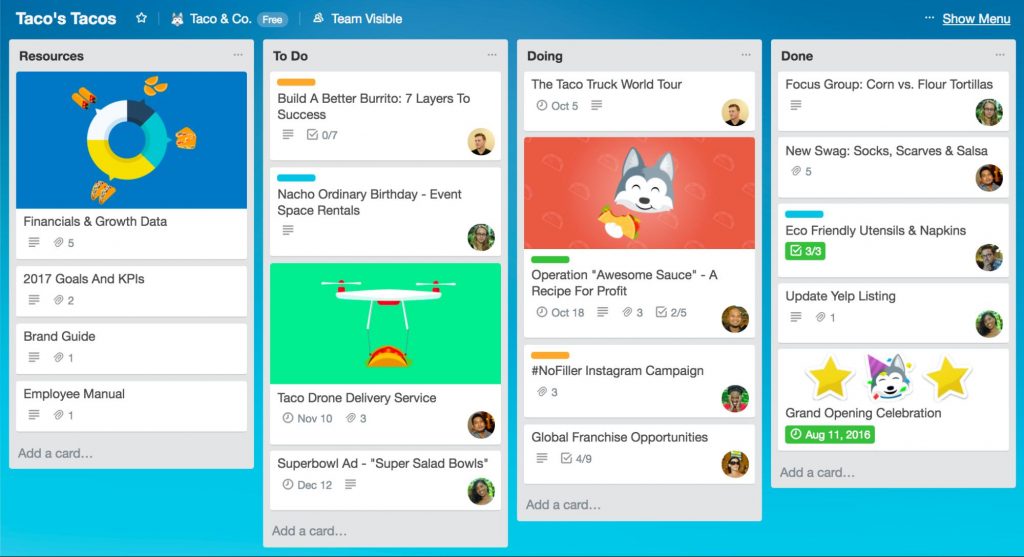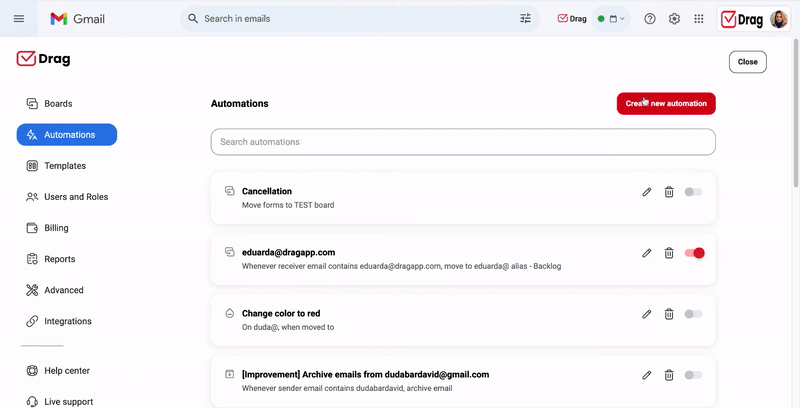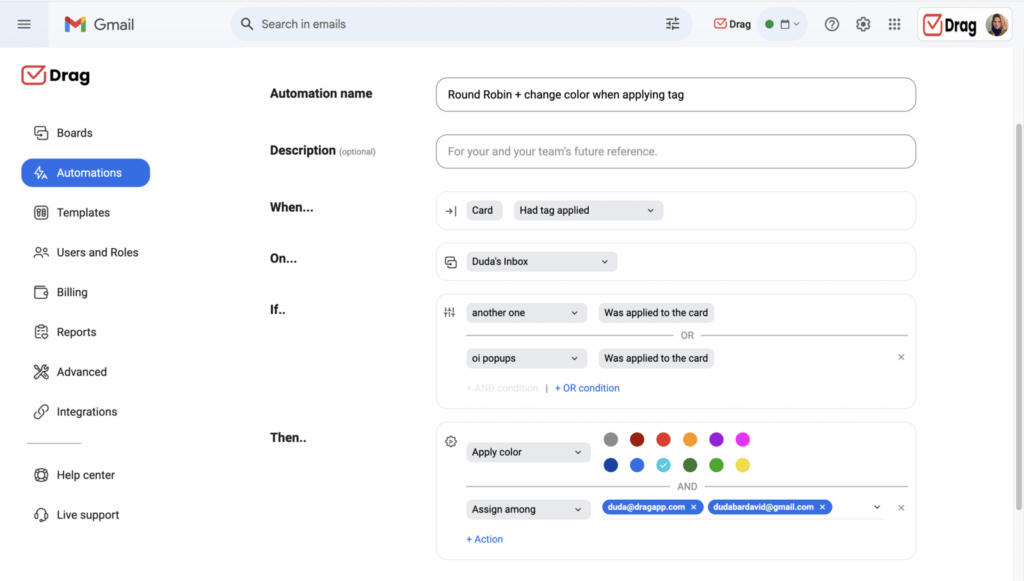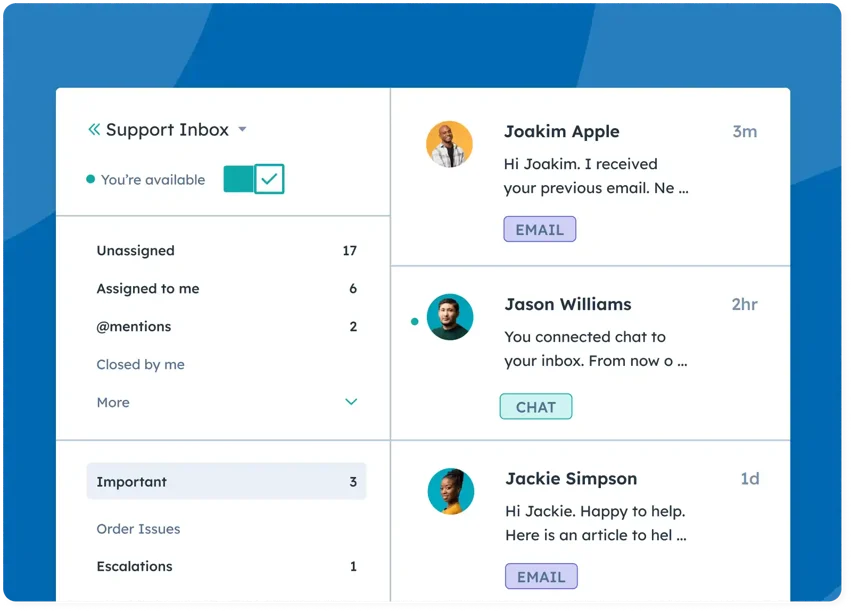
Using email round robin assignments helps you distribute the workload better among agents. That way, you can build a well-rounded team with a quick solution turnaround. The result? It drives up customer satisfaction.
One of the many challenges that customer-facing teams have is managing time-based tasks. From sales to a help desk email, it’s crucial to have quick answers. That way, you can enhance your relationship with customers. Additionally, a quick response time is a huge benefit for sales and marketing, given that faster interaction is an asset against competitors.
However, it’s safe to say a fast response isn’t the only thing that matters. Customers are looking for efficient communication as well, so you need to offer all relevant information in that short time. How can teams fulfill both the time and helpfulness rates clients want?
The answer is managing and scheduling tasks accordingly. Managers and teams have to find their rhythm based on customer needs, team size, shareable files and company history. That is, you need to build a team that works best with the set of tools offered. One of the ways this is done is by productively assigning tasks. And email round robin assignments can help.
Why assigning tasks matters
Picture a team that works with customer support. They’ll have checking the customer support inbox, finding answers and writing back as their main tasks. However, they might also need to work on specific tasks collaboratively, by asking other agents for help or looking into experts from within the company for answers. Often, they’re also browsing through previous solutions and building documentation, which adds to the workflow.
The team needs to take care of this fast, given that it isn’t useful to keep the client waiting too long. But between the influx of new tasks, keeping track of all steps is a hard process. That’s when task management comes into play. Organizing your workflow can make the whole pipeline easier to work with and monitor.
With the right tools, agents can see all their open tickets, find their files, @mention their collaborators for help and much more. And managers can see all incoming tasks and assign them to the team according to their needs. That means scheduling specific steps across the team to make sure you don’t lose any tasks, but also no agent is overwhelmed.
The different ways to assign tasks
Even though all teams can benefit from task assignments, there are different manners to do it. Some might be more useful for certain tasks, while others help schedule a wider variety of roles and departments. The most important thing, however, is to make sure whichever form you use works for you and your team and stays consistent across all projects.
That way, it’s less confusing for all interested parties and the planning process accounts for the entirety of your pipeline.
Manual assignments
The first way to assign tasks is manually. Manual task assignments can be time-consuming for bigger teams, but if you’re working on simple projects, it’s a great way to enhance your workflow. For example, an entrepreneur that hires freelancers on a project basis and needs to keep everyone on course. Having a dedicated space such as a project management app with all different tasks helps you plan your schedule.
Then, when you need to assign it to someone else, simply move the task to their queue and it should be ready for them. They’ll get a notification with the deadline and any relevant information. As soon as they finish, they can move it back to your queue and the process goes on.
Here’s how this management system looks on Trello, one of the best-known task management apps in the market:

Priority based assignments
However, bigger teams come with bigger responsibilities. Managers aren’t just needed for distributing tasks among agents, but also for determining the amount of time a task needs and the priority it has on the queue.
Certain company areas, such as a help desk inbox, are always getting new messages. So the role of the task manager is to keep things organized. One technique some managers apply is priority-based assignments. Based on the idea of priority-based scheduling from computer operations, this method puts prioritized tasks at the top of the queue. Then, managers distribute them among agents.
There are many ways to determine which tasks are priorities. It might be related to a certain subject or the time needed to answer the queries. For instance, in case of a bug, app developers might have a system in which they answer users who need troubleshooting first. As soon as those are solved, agents get tickets with other concerns. Or perhaps sales teams give higher priority to emails from clients going through the deal process. That way, they don’t leave a potential customer waiting too long for an answer.
Of course, it’s important to know how to find these tasks by priority. If you’re using Gmail as the main communication hub for your company, you can auto move to folders by using labels and filters. That way, incoming messages move to categories as soon as they reach your inbox. Here’s how it looks:
Here’s how to do it:
- Open Gmail and click on the search bar
- Enter the search criteria for the emails according to a priority. For example, you can search for emails with a keyword or subject line, such as “Is not working”
- Afterward, click on the “Create filter” button at the bottom right.
- In the “Create filter” window, choose what you want Gmail to do. To help with scheduling, you can apply a label to all incoming mail that matches your criteria.
- Then, click on the “Create filter” button to save the filter.
- Bonus: if you are automatically assigning certain topics to a specific agent, you can use the filter to automatically forward matching messages to their inbox.
Round robin assignments
The idea behind email round robin is that all agents should have equal amounts of work without leaving any messages unattended. That is, any incoming task that reaches the company’s inbox is automatically assigned to the next available person instead of choosing by priority.
This method consists of distributing work on a person-by-person basis. If an agent is busy or unavailable, the task goes to the next person and so on, until everything has a dedicated worker. That means people can get new tasks as soon as they finish one, leading to shorter response times. On the flip side, that means when an agent is taking a longer time with a specific query, they don’t get new tasks. That way, they can focus fully on what they’re working on.

Teams that receive a lot of different kinds of messages across various channels prefer this method. By centralizing them on a platform and distributing them according to availability, the team works much more efficiently through a diverse set of tasks.
Advantages of email round robin scheduling
Email round robin assignment became a popular method due to its flexibility. Managers can adapt it to small companies and bigger enterprises, multiple departments or customer-facing roles. The simple task distribution system allows managers to build a personalized workflow on par with their challenges and deadlines. Here are some of the main advantages of implementing email round robin assignment in your company’s inbox:
Use of resources
It’s always a challenge to keep up with the influx of new tasks. If your team is working on a new project or solving queries from customers, the workflow should be as efficient as possible. That means neither overwhelming a collaborator with too many tasks.
Round robin assignment means the system is based on availability. If your customer support agent is busy working on a query, they won’t get a new task assigned. Instead, someone who’s free gets the new task. This cuts down on idle time, which makes tasks progress faster among the team.
Waiting time
Since email round robin is based on the team’s availability, all incoming tasks are assigned as soon as possible. That means no message is left unattended until higher priority tasks are solved. All of them have the same focus and space in the queue.
Of course, at some point the queues might be longer, but implementing round robin assignment leads to customers getting a faster response. As a benefit, they have a higher satisfaction rate and this translates to a better relationship in the long run.
Agent productivity
For the agents, sorting incoming messages with email round robin is also easier. First of all, they get new tasks based on their availability, which means they don’t have an overwhelming amount of tickets in their queue. Secondly, they can focus fully on each specific task, instead of going back and forth between each step as new messages come in.
One of the main sources of productivity loss is context-switching. Context-switching is the time spent going from app to app, from tab to tab and from task to task. When you switch between various projects, you lose productivity each time. As the new tasks come in, this loss translates into more time spent trying to get back into focus on each one.
That means round robin is a great tool against productivity loss. With less stuff cluttering their workflow, collaborators can finish each task as needed before moving on. Less time lost, fewer mistakes made, better outcomes all around.
Turn Gmail into your Team’s Workspace.
- 2.5x faster email responses.
- 20 hours less spent per month, per team member.
- 40% more deadlines achieved and happier teams.
How to set up email round robin assignment
Now that you know the main advantages of an email round robin system, you’re probably looking for a way to set it up in your workflow. The best way to do it depends on what other tools are part of your digital workspace. Here are a few ways:
Importing emails into a task manager
If you use task manager software on a daily basis, you know how useful it can be to assign specific actions to users in your team. That is useful for email round robin assignment as well. But first, you need to import emails into the app itself.
Most of these apps allow for email connection. With HubSpot Gmail integration, for example, you can connect your email inbox to the platform. Then, you view them in a centralized dashboard, where you can continue distributing the tasks among users in your team.
The main issue with this method is that it requires manual assignments. However, it cuts down on context-switching, since your team can view all relevant information from emails right there in the task management app.
Using a shared inbox
A shared inbox is a great way to implement email round robin. What’s a shared inbox? It’s a collaborative space in which all users who are part of the team can see all mail in real-time. The inbox is accessible from their own account. So, there’s no need to log in and out. Nor do users have to forward messages to themselves to keep working on tasks.
Since everyone can view the messages, they can work at the same time, without the risk of any email getting lost. Round robin assignment is much easier as well: the manager can simply @mention the team member as soon as they are free.
There are many shared inbox apps in the market, such as DragApp. With Drag, you can go beyond a traditional inbox. One of the available views is a Kanban board, which turns emails into task cards and categorizes them into boards. The boards follow the different stages in your workflow and allow users to see how far it is along the pipeline.
With that, email round robin is also easier. Team members simply move the card to the “Finished” column to indicate they are done. Then, the manager assigns them a new task by using another Drag function, the @mention.
Drag: enabling round robin assignments
Drag also offers automated email round robin assignment to make your team even more efficient. As users go through different queries, the app organizes incoming messages to fulfill the queues. The round robin method, here, is another tool that benefits productivity.
Here’s how to set it up:
- Install the DragApp Chrome Extension and invite your team
- Open your Gmail inbox and click on the Drag icon
- Look for Automations on the left sidebar
- Then, click on Create new automation

- Give the automation a name and description
- On When, choose Card received
- You can choose which board(s) the automation is applied to
- You can also choose specific criteria for the emails to be automatically assigned (such as keywords)
- Or select Any email to apply the rule to all incoming messages
- Select Assign among
- You can pick individual users to apply the automation to
- Alternatively, choose All board members to apply the email round robin automation to your whole team
Done! Now you’ve implemented round robin assignments and the tasks will be distributed across team members equally.
Email round robin and customer satisfaction
Client satisfaction is a key email metric and translates to a bigger company growth. There are different ways in which email contributes to this statistic. First of all, sales and marketing. Promotional emails have a higher interaction rate than any other channel, including social media. So when a potential new customer interacts with you over email, there’s a bigger chance it leads to a sale. But fast, efficient responses from the sales team are required to make it happen.
And even when the customer is already part of your client base, it’s crucial to keep a good relationship with them. This means a good customer support system that solves any concerns and questions. These are time-sensitive as well, there’s a sense of urgency along with the need to offer complete information to solve the ticket.
Email round robin contributes to a better workflow. This, in turn, contributes to a higher response rate, a faster solution and an improved relationship with customers.
Wrapping up
Email round robin is another method that enhances your team’s work and can contribute to growth. As you implement it and use it, you can identify the tasks that take the longest, the most frequent demands and your team’s productivity. This data can be used as a basis for new strategies, projects and products. As time goes on, your efficient workflow becomes one of the biggest assets for your company.
Turn Gmail into your Team’s Workspace.
- 2.5x faster email responses.
- 20 hours less spent per month, per team member.
- 40% more deadlines achieved and happier teams.









